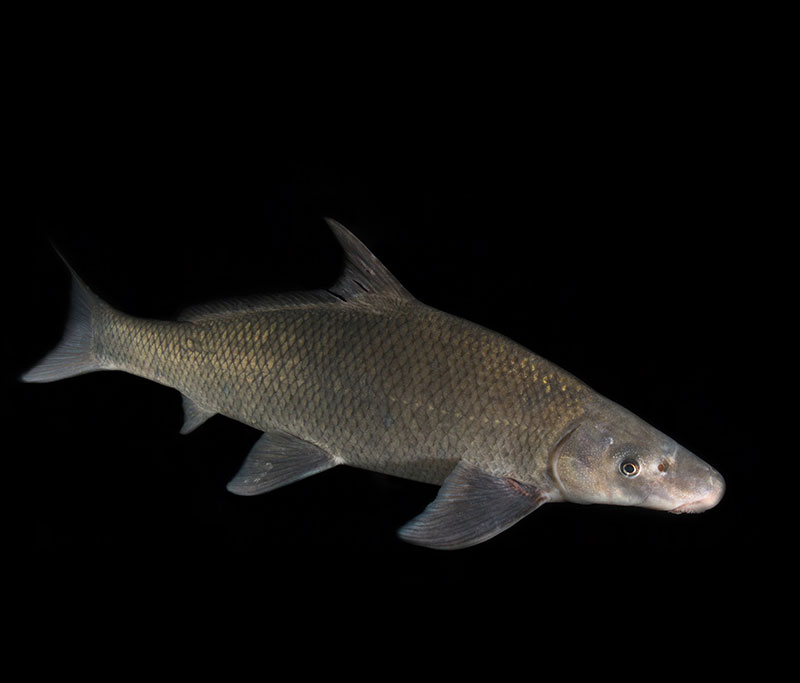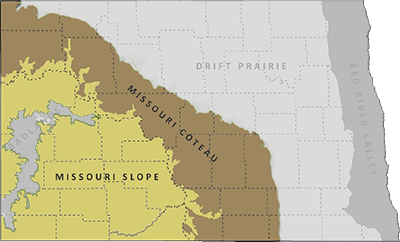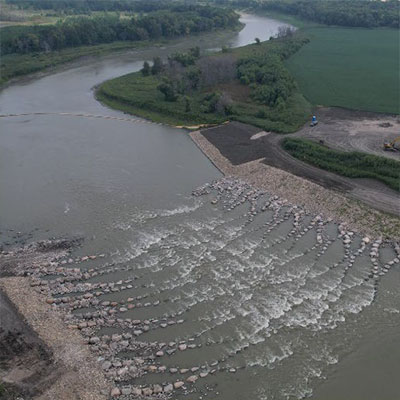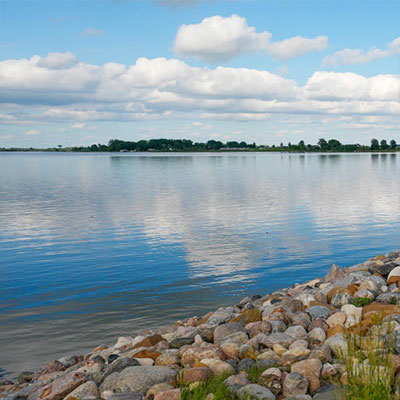Blue Sucker

USFWS
Body generally compressed and elongated. Head small for body size. Bluish gray in color. Dorsal fin long, falcated. Deeply forked caudal fin. Snout rounded with subterminal mouth. Papillae on lips.
Status in North Dakota
Resident.
Reason for SWAP Designation
Loss of free-flowing stretches of the Missouri River due to impoundment and channelization has reduced suitable habitat for this species.
Threats
The loss of suitable habitat caused by a change in the riverine regime is the largest problem affecting this species.
Historically, blue suckers were present throughout the entire Missouri River System.
The construction of dams and channelization has largely changed the river system.
Dams have reduced the sediment load, which in turn has lowered turbidity.
The release of cold water from impoundments has lowered the overall temperature of the system making much of the Missouri River too cold for blue sucker.
Dams also have fragmented populations by restricting movement throughout the system.
The use of water for agricultural, industrial, and municipal purposes along the river may impact blue sucker populations by reducing water levels.
Entrainment of fish in irrigation systems, and oil and gas development within the basin are also recognized as threats.
Research and Monitoring
- The USFWS, USGS, and Montana Fish, Wildlife, and Parks currently track movements of tagged blue sucker in the Yellowstone and Missouri rivers.
- The states rivers and streams are surveyed for species on a 5-year rotating schedule.
- North Dakota DEQ staff survey rivers and streams through their Index of Biotic Integrity program.
- Locate key spawning areas in the Missouri River system.
Management Recommendations
- Continue to use the Section 404 program to ensures affected rivers and riparian areas are mitigated to replace form and function.
- Continue to work with other federal agencies not covered by 404 to ensure affected rivers and riparian areas are mitigated to replace form and function.
- Continue to work with NDSWC to develop instream flow recommendations.
- Promote incentive programs to restore riparian areas.
- Continue to work with ND 319 Task Force in prioritizing projects within impaired watersheds and implementing BMPs.
- Implement intake conditions or recommendations.
- Cooperate with NDGFD Fisheries staff on state aquatic nuisance species plans.
- Removal of dams and other barriers.
- Retrofitting dams with fish passage structures.
- Protect key spawning areas within the Missouri River System when identified.





